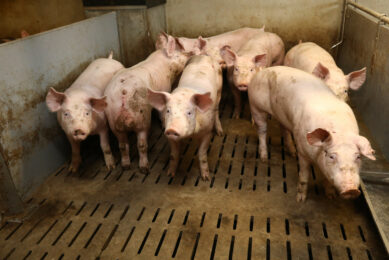BLOG: Antimicrobial use monitoring – what is the best method?

Following on from my last weblog, how should we move forward with monitoring of antimicrobial use in pigs in the EU, what are the advantages and disadvantages of some of the systems that are already in place?
I have already said that the monitoring of antimicrobial use in pigs is going to be difficult and will need to go down to a farm level. We need to have it divided into at least three segments – breeder plus piglets, weaner/grower and finally finisher to cover the multitude of farming systems that are available. Some farms are breeder/finishers, which covers all sections, others supply piglets that have just been weaned (7-8kg bodyweight), others rear to 25 kgs and sell as growers but others rear in nurseries up to 35kgs and weaner/growers to even 45kg, before they are sent for finishing. Slaughter weights can be another issue with the majority between 100-120 kgs but in Italy they can go to 160kg. Time on the farm can be important due to the increased risk of exposure to various diseases, eg. swine dysentery and also swine influenza. Generally, the occurrence of certain diseases are predictable on most farms, we know when they are going to occur eg. post-weaning diarrhoea, ileitis and to a certain extent enzootic pneumonia and pleuropneumonia.
Already the Dutch system, which caters for two types of production, the breeder/weaner to 25kgs and then finisher could not be applied to many countries, but seems to fit their system. The Danish system that takes in the 3 sector types of production would be more workable.
What should we measure is possibly the next question. A simplistic approach is to measure mg antimicrobial/kg bodyweight. For example: –
In the UK the pig industry produces 10 million pigs, they weigh 100kg and possibly (unconfirmed) consume 200 tonnes of antimicrobials, the mg/kg liveweight = 200mg/kg liveweight and or 267mg/kg deadweight.
How realistic is this? The number of pigs slaughtered in each country is usually recorded as well as the amount of pig meat produced. The Danes compared their usage by species of animal and showed that pigs peaked in 2009 at approximately 54mg antimicrobial/kg deadweight (Danmap 2011, 2012) and then dropped back to about 40mg/kg dwt by 2011, after the start of their yellow card scheme. Interestingly, sea water and fresh water fish also had comparable usage to pigs, followed by turkeys but broilers were surprisingly low at 2-3mg/kg dwt.
A large difference can be seen between the UK, which we consider a moderate-use country and Denmark a very low-use country.
ESVAC (2012) compared a number of Member States antimicrobial usage figures for 2010, in comparison with their animal population data using a figure of mg antimicrobial/population correction figure (pcu), which is quite complex to calculate (see Figure 1).
Denmark was one of the lowest at 47mg/pcu, UK was quite low at 75mg/pcu but we have a lot of sheep, broiler chicken and cattle production, which are relatively low users of antimicrobials. France, Netherlands, Belgium and Portugal were in the middle (range 132-180mg/pcu) but Spain and Hungary were surprisingly high at 241 and 268mg/pcu, respectively. Again, it shows that there is a huge variation between countries and I suspect not just linked to the type of meat they produce.
The Danes and the Dutch have used an average daily dose in their calculations to get away from mg antimicrobial. This is beneficial as many of the older antibiotics like the tetracyclines are used at 10-40mg/kg bodyweight, trimethoprim/sulpha 15-30mg/kg, amoxicillin 20mg/kg, whereas many of the “critical” antimicrobials we want to cut back on such as the 3rd generation cephalosporins and fluoroquinolones are used at a lower dose of 2.5-5.0mg/kg bodyweight, so potentially could encourage their use.
Some countries have stopped using antimicrobial premixes in feed, in an attempt to rapidly reduce their usage figures, eg. Netherlands but Wallinga and Burch (2013) demonstrated that the antimicrobials used in pig feed in the EU are generally the older compounds, which are not associated with the direct selection of the human “critical” fluoroquinolone or ESBL (extended-spectrum beta-lactamase) resistance associated with 3rd and 4th generation cephalosporin use, as these products are not used in feed but only by injection and the former in drinking water in other species.
So an average daily dose (ADD) seems to be the way forward, but establishing the sensible usage limits is still some way off. The Danes are already getting reports of increased mortality, condemnations and increased slaughter lesions, surprisingly mainly affecting the gut (Alban and others, 2013), which may suggest that they are about at the lowest level of use, in spite of increased vaccination. Their yellow card allows twice the average use, so this could bring it closer to 80-100mg/kg dwt before intervention, which is still a long way off from the UK’s estimated figure of 267mg/kg dwt and I suspect most of the EU Member States, as judged by the ESVAC data. There is still a long way to go before this is formulated but direct species data will be required before any future assessment can be made. In the meantime, farmers can start looking at their own usage rates.











